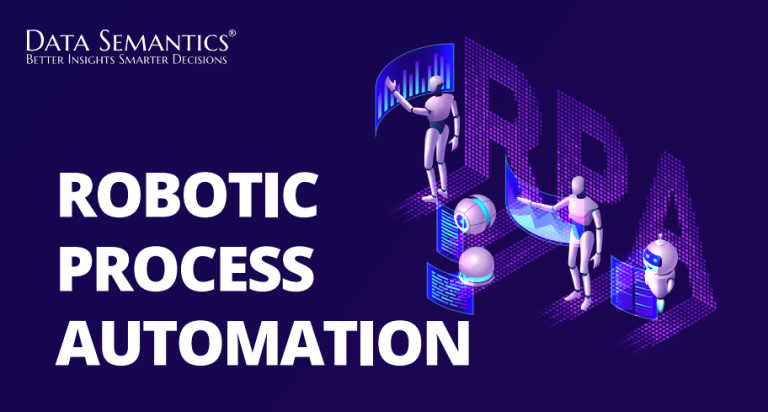A data warehouse today is a necessity. Data analytics has moved to the heart of revenue generation. It’s no surprise that the amount of data generated and analyzed, as well as the number of data sources, have exploded.
Progressive, data-driven companies require robust solutions for managing and analyzing large quantities of data across their organizations. These systems must be scalable, reliable and secure, as well as flexible to support a wide variety of data types and use cases.
These requirements go beyond the capabilities of any traditional database. That’s where a data warehouse comes in.
Table of Contents
What is a data warehouse?
A data warehouse is a company’s repository of information that can be analyzed to make more data-driven decisions. Data flows into a data warehouse from transactional systems, relational databases and several other sources.
Business analysts, data engineers and data scientists make use of this data through business intelligence (BI) tools, SQL clients and other applications.
Data warehouses power reports, dashboards and analytics tools by storing data effectively to minimize the input and output (I/O) of data and deliver query results quickly to hundreds and thousands of users.
How does a data warehouse work?

A data warehouse contains multiple databases. Within each database, data is stored in tables and columns.
Within each column, you can add a description of the data, such as integer, data field or string. Tables can be organized inside of schemas, which you can think of as folders.
When data is consumed, it is stored in various tables described by the schema.
Query tools use the schema to determine which data tables to access and analyze.
When to use a data warehouse?
You should consider a data warehouse if you want to:
- Store all of your historical data in a central repository
- Analyze your web, mobile, CRM, and other applications together in a single place
- Get deeper business insights than traditional analytics tools by querying data directly with SQL
- Provide multiple people access to the same data set simultaneously
Data warehouse architecture

Data warehouses have a three-tier architecture. Let’s look at each of them in detail.
Bottom tier: The bottom tier consists of a data warehouse server, a relational database system that collects, cleans and transforms data from multiple data sources through a process known as Extract, Transform and Load (ETL) or a process known as Extract, Load and Transform (ELT).
Middle tier: The middle tier consists of an OLAP (i.e., online analytical processing) server which enables fast query. Three types of OLAP models can be used in this tier, such as ROLAP, MOLAP and HOLAP. The type of OLAP model used is dependent on the type of database system that exists.
Top tier: The top tier has a front-end user interface or reporting tool, which enables end-users to conduct ad-hoc data analysis on their business data.
Schemas in data warehouse
Schemas represent how data is organized within a database or data warehouse.
There are two main types of schema structures, the star schema and the snowflake schema, which impact the design of a data model.
- Star schema: This schema consists of one fact table which can be connected to several denormalized dimension tables. It is considered the simplest and most common type of schema and its users benefit from its fast speed while querying.
- Snowflake schema: While not as widely adopted, here the fact table is connected to several normalized dimension tables and these dimension tables further have child tables. Users of a snowflake schema benefit from its low levels of data redundancy but pay for query performance.
Data warehouse vs database, data lake and data mart
Often these terms are used interchangeably. While the terms are similar, significant differences exist.
Data warehouse vs database
[table id=18 /]
Data warehouse vs data lake
[table id=19 /]
Data warehouse vs data mart
[table id=20 /]
Do data warehouses, databases and data lakes work together?
Businesses use a combination of a database, data lake and data warehouse to store data.
With the increasing volume and variety of data, it is a good practice to follow one or several patterns of working with data.
A data warehouse is designed for data analytics, which involves reading substantial amounts of data to understand relationships and trends across the data. It requires data to be organized in a tabular format, bringing schema to the forefront. The tabular format is needed so that SQL can query the data.
A database is used to capture and store data.
Unlike data warehouse, data lake is a repository for all data, including structured, semi-structured and unstructured.
Types of data warehouses

Cloud data warehouse
A cloud data warehouse is offered to customers as a managed service.
With a cloud data warehouse, the infrastructure is managed by the cloud company, meaning that the customer does not have to invest in hardware or software and does not have to manage or maintain the data warehouse solution.
Data warehouse software (on-premises/license)
A business can purchase a data warehouse license and then deploy a data warehouse in their own on-premises infrastructure.
Although this is more expensive than a cloud data warehouse service, it might be a better choice for government offices, financial institutions or other enterprises that want more control over their data or must comply with strict security or data privacy standards or regulations.
Data warehouse appliance
A data warehouse appliance is a pre-integrated hardware and software that businesses can connect to their network and start using as-is. This type of data warehouse sits somewhere between cloud and on-premises implementations in terms of upfront cost, speed of deployment, ease of scalability and management control.
Benefits of using a data warehouse
- Improved end-user access to a wide variety of enterprise data
- Increased data consistency
- Additional documentation of the data
- Potentially lower computing costs and increased productivity
- Providing a place to combine related data from separate sources
- Creation of a computing infrastructure that can support changes in computer systems and business structures
- Empowering end-users to perform ad-hoc queries or reports without impacting the performance of the operational systems
Examples of data warehousing in different industries
Let’s look at a few industries that consider data warehouse an essential part of their day-to-day operations.
1. Retail
In the retail sector, data warehouses are mainly used for tracking of items, examining pricing policies, keeping track of promotional deals and analyzing customer buying trends. Retail chains usually incorporate enterprise data warehouses for business intelligence and forecasting needs.
2. Investment and insurance sector
In the investment and insurance sector, data warehouses are leveraged to study customer and market trends and other data patterns. Forex and stock markets are other sectors where data warehouses play a significant role because a single point difference can lead to massive losses. These sectors share data warehouses and focus on real-time data streaming.
3. Healthcare
Healthcare sectors use a data warehouse to forecast outcomes, generate treatment reports, share data with insurance providers, research labs and other medical units. Enterprise data warehouse is the backbone of healthcare systems as the latest, up-to-date treatment information is crucial for saving lives.
Top 10 data warehouse solution providers
Data warehousing solutions come with a range of useful features for data management and consolidation. Some even come with machine learning algorithms and AI built-in. The real question is, which cloud data warehousing solution is the best?
- Microsoft Azure Synapse
- Google BigQuery
- Amazon Redshift
- Snowflake
- IBM Db2 Warehouse
- Oracle Autonomous Warehouse
- SAP Data Warehouse Cloud
- Yellowbrick Data
- Teradata Integrated Data Warehouse
- Panoply
Find the right data warehouse for your business
Before you pick a solution, don’t forget to consider:
- The type and amount of data you want to store
- How dynamically you need it to scale
- How fast you need your queries
- Whether you want manual or automatic maintenance
- The compatibility of the data warehouse with your existing tech stack
- The cost
Still not sure which data warehouse is best for your business? Opt for demos with your top picks. They all offer free trials.
















